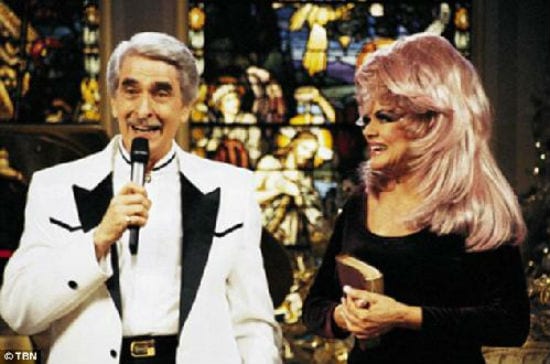Here is your open thread for March 14, 2020. Day 1 of the Chester County “lockdown.”
Legendary legend Quincy Jones celebrates his 87th birthday today, so there’s probably some amazing party happening somewhere. The closest we’ll come to that party is probably re-reading his bonkers 2018 interview with David Marchese. (Half of what he says there is half-true, the other half is half-false, but it’s hard to say which half is which.)
One of my favorite Quincy Jones compositions is his soundtrack for In the Heat of the Night, which is terrific on its own, but also really underscores the mood, tone, and theme of the story. (If you haven’t seen that movie, get on it — Poitier and Steiger are so good playing off one another.) Here’s the theme song, sung by Ray Charles:
March 14 is “Pi Day” — 3.14 … get it? That’s fun, but Pi Day is a social construct. Calendars and dates don’t exist apart from us or apart from our mutual agreement to say they do. But pi itself does, and not just in circles, but as a ratio that pops up all over the place even where it seems like it has no business showing up. I’m an English major, not a math person, but those weird echoes of pi seem like some kind of clue we haven’t yet figured out — some rule of magic, or a glitch in the simulation, or a hint of providence.
The Truce of Ulm was signed on March 14 in 1647 — 29 years into the Thirty Years War (which is how you know it didn’t last). That war is one of those dizzying pieces of history that I find impossible to follow. I can’t keep straight who was fighting who over what and why. From what I can tell, most of the people fighting in that war weren’t sure about any of that either.
It was a religious war, sort of — partly a Protestants vs. Catholics thing, but also partly a Protestants-vs.-Catholics-as-pretext-for-other-stuff thing. It left 8 million people dead in a time when that was a much larger share of the total population than it is now. That vast death toll helped us realize that maybe the separation of church and state was a Good Thing. You can tell we took that lesson to heart because a little more than 150 years later, we had World War I — involving many of the same nations fighting over many of the same convoluted and dimly understood reasons. But whatever the confused and confusing causes of World War I might have been, they were almost entirely secular. So that’s progress, I guess.
On March 14, 1961, an American B-52 carrying four nuclear bombs crashed near Yuba City, California. The bombs didn’t go off, which is why there is still such a thing as Yuba City, California.
Jack Ruby was found guilty of murdering Lee Harvey Oswald on March 14, 1964. He’d pulled out a gun in front of a crowd of reporters, photographers, and police officers and fatally shot Oswald on national television, an event witnessed live by millions of Americans on TV. But even those reporters who were physically present as eyewitnesses to the killing would have referred to Ruby as having “allegedly” shot Oswald right up until the day he was convicted four months later.
That’s an important principle in journalism — an affirmation of the sacred principle of innocent until proven guilty (as well as of the even-more-sacred principle of avoiding potential libel suits). It’s a good rule that exists for good reasons. But I also worry that it’s contributing, indirectly, to the epistemological fog of 2020 America, a realm in which nothing is acknowledged as real, only as “alleged,” and where there is thus no reality to speak of, only a series of competing and conflicting allegations. I’m glad we try to defend the rights of the accused by insisting that their alleged crimes are only alleged until and unless they are proved beyond a reasonable doubt in court. But I’m not sure we’re able to handle a pandemic when we live in a society where it can only be discussed as an alleged outbreak.
In any case, the interesting question about Jack Ruby was never whether or not he shot Oswald. The interesting question was why he did so.
Casey Jones was born 157 years ago today. Here’s Johnny Cash reminding us why that matters.
Gene Cernan, the last earthling to walk on the Moon, would’ve been 86 years old today. “We leave as we came,” he said, just before climbing the ladder, “and, God willing, as we shall return, with peace and hope for all mankind.”
White Christian television host and media mogul Jan Crouch was born 81 years ago today. If you want to understand the history and meaning of black Christianity in America during the 20th century, read Taylor Branch’s three-volume set on the civil rights movement. If you want to understand the history and meaning of white Christianity in America during the 20th century, Google Jan Crouch. Or, heck, just look at this picture:

Michael Caine turns 88 years old today. Billy Crystal turns 72. Rick Dees counts down 70 years today, and coming in at No. 69 is Jerry Greenfield (the Jerry of Ben & Jerry’s).
Steph Curry turns 32. He is Very Good at basketball, but not as good at basketball as Simone Biles is at gymnastics. Biles turns 23 today.
Talk amongst yourselves. Allegedly.












